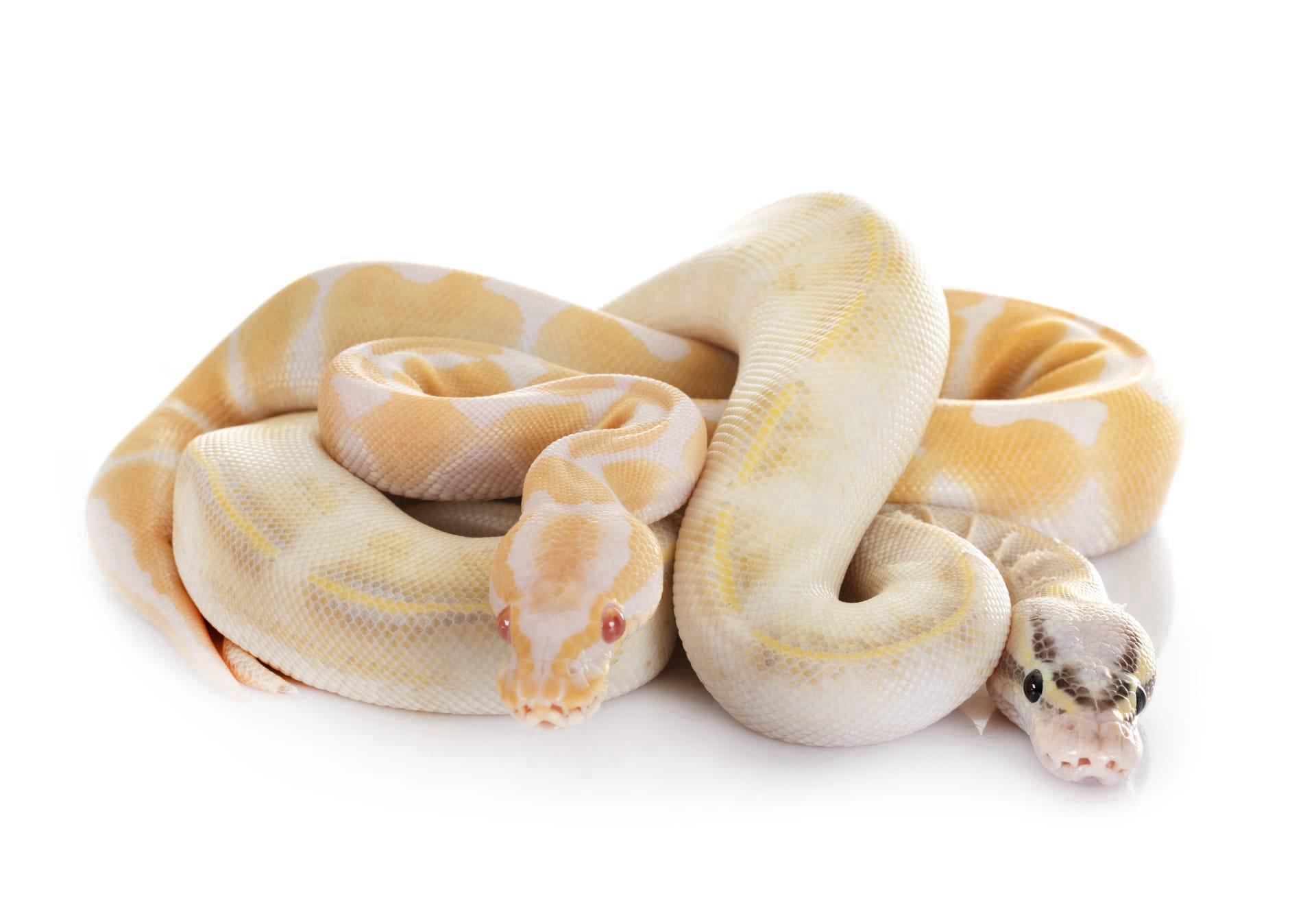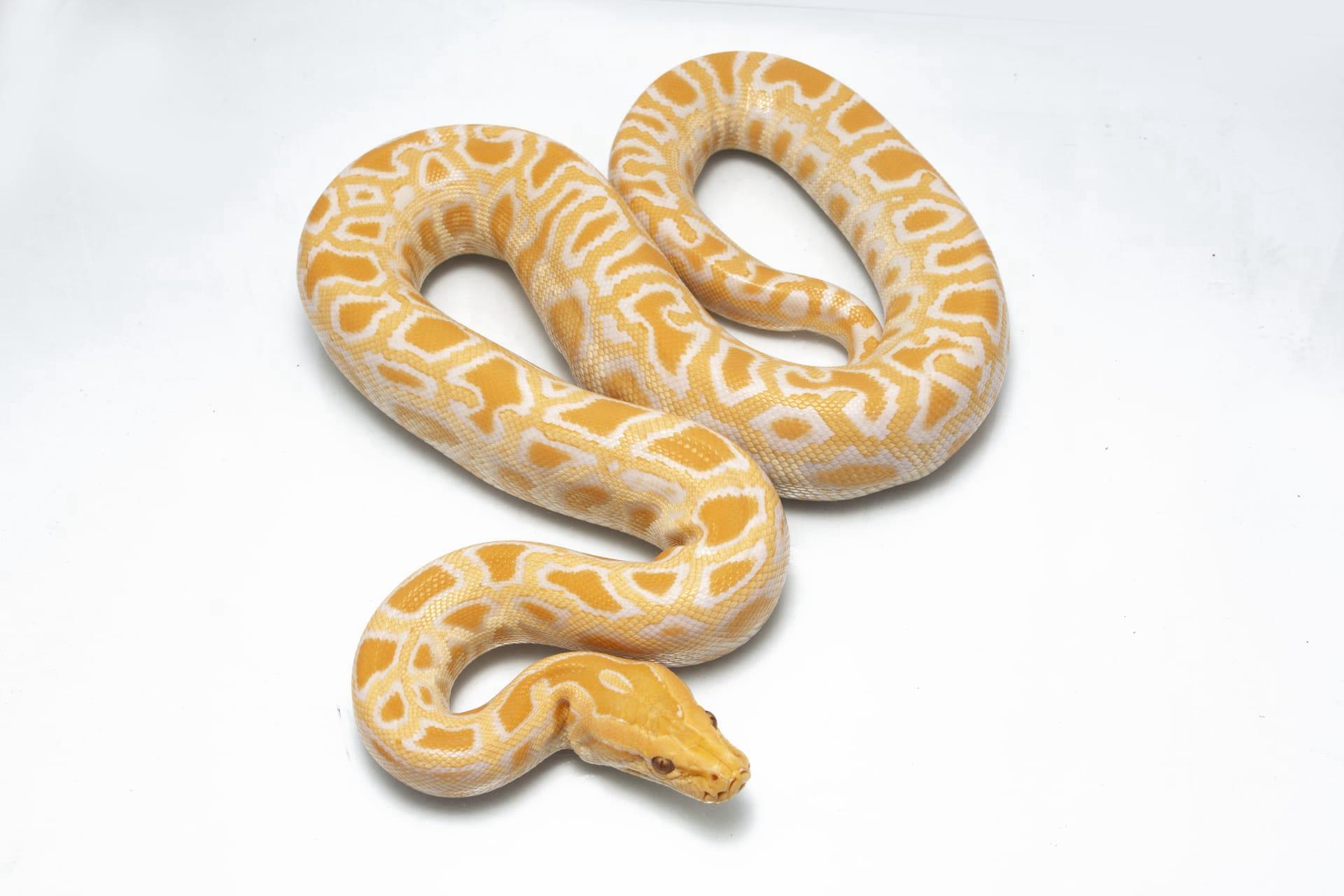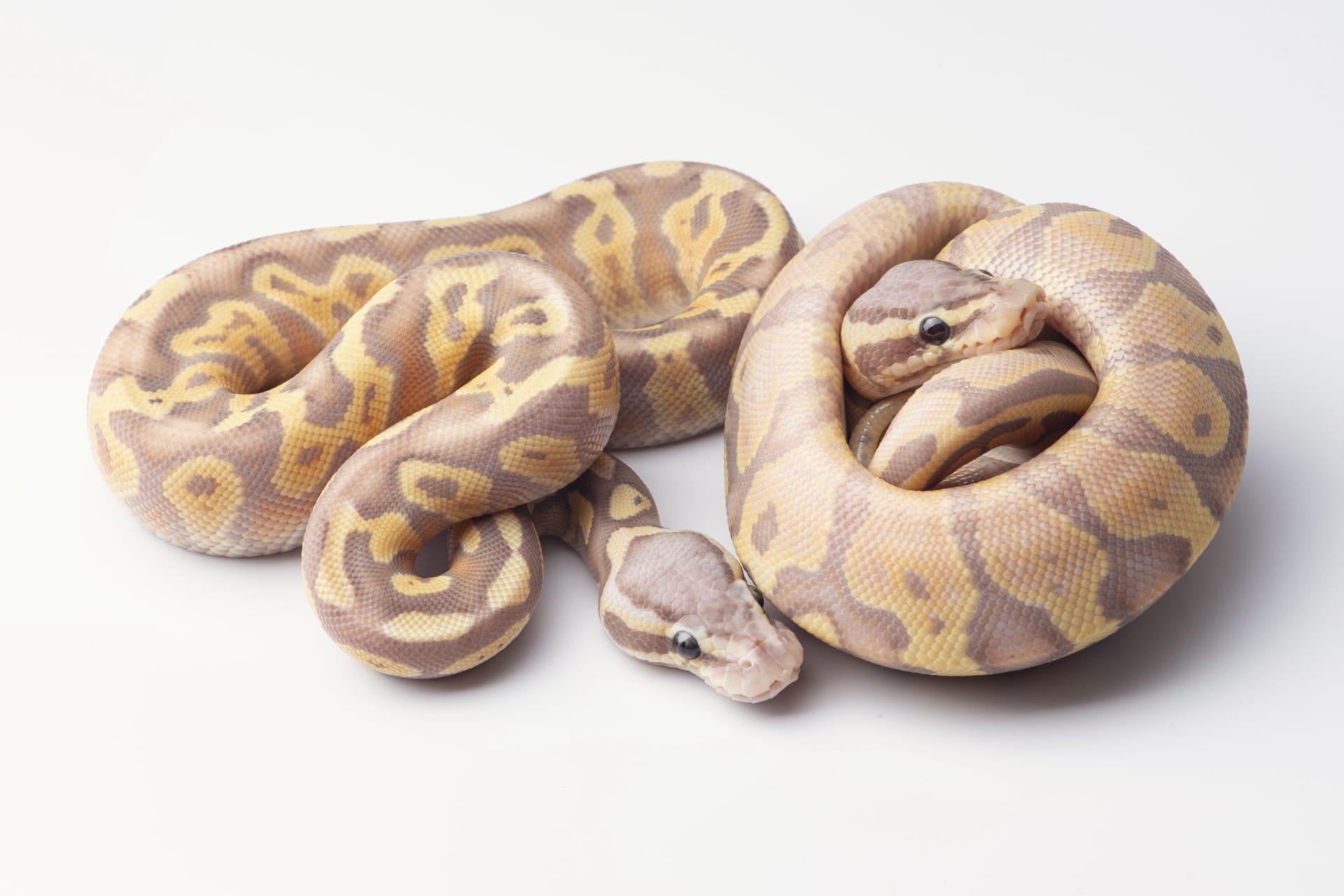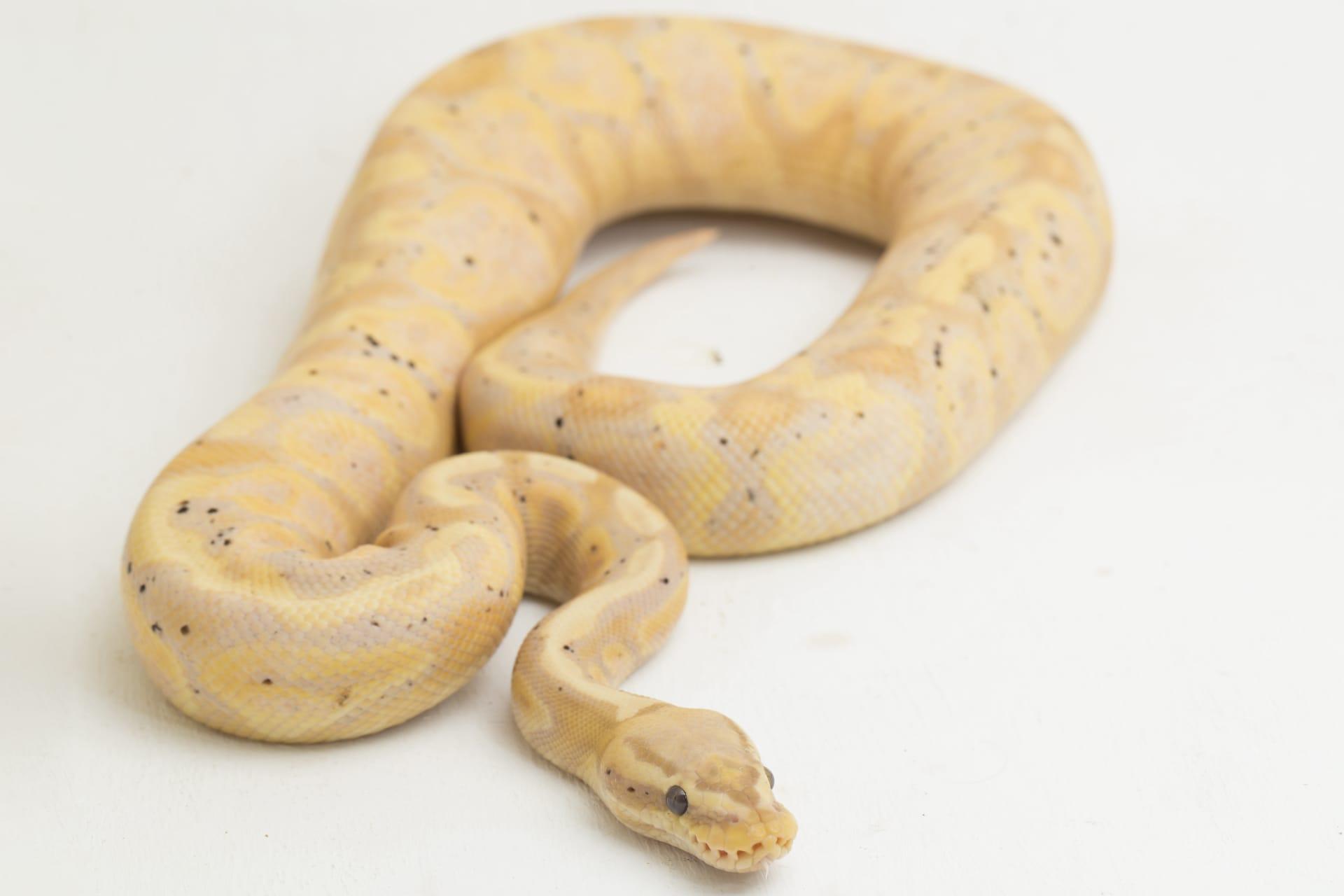Banana Ball Python Characteristics
- Home /
- Mini Encyclopedia /
- Animal /
- Banana Ball Python Characteristics
1
Banana Ball Pythons, known for their vibrant yellow and black patterning, are a fascinating species in the python family. Typically, these snakes grow to about 3 to 5 feet (90 to 150 cm) in length, which is relatively small compared to other python species. They have a robust and muscular build, contributing to their characteristic 'ball' shape, from which their name derives. The lifespan of a Banana Ball Python in captivity can range from 20 to 30 years, making them a long-term commitment for pet owners.
One of the most remarkable organs in the Banana Ball Python is its heat-sensing pits located around the mouth. These pits are infrared receptors, enabling the snake to detect warm-blooded prey even in complete darkness. This adaptation is particularly crucial for their survival in the wild, as it helps them to hunt nocturnally, sensing the body heat of rodents and birds which are their primary prey.

2
Question: What causes the unique yellow coloration in Banana Ball Pythons?
Answer: The distinctive yellow coloration of Banana Ball Pythons is the result of a genetic mutation. This mutation affects the pigmentation in their skin, reducing the black pigments while enhancing the yellow and orange hues. It's a naturally occurring variation, found in wild populations, but it has been selectively bred in captivity for its striking appearance. The pattern and intensity of the color can vary among individual snakes, making each one uniquely patterned.

3
Banana Ball Pythons are not particularly fast movers. They rely on their ability to blend into their environment for protection and hunting. Their movement is typically slow and deliberate, with the capacity for quick strikes when capturing prey. In the wild, their movement is often linear, following the paths of prey or seeking out warm spots.
As predators, these snakes exhibit fascinating hunting behaviors. They are constrictors, meaning they coil around their prey and tighten their grip to subdue it. They primarily feed on small mammals and birds. Their hunting strategy involves lying in wait, often in a coiled position, and then striking rapidly when prey comes within range. They have a strong grip and typically wait for the prey to succumb before consuming it whole.

4
The natural habitat of Banana Ball Pythons is primarily in sub-Saharan Africa. They thrive in warm, tropical climates and are often found in grasslands, savannas, and sparsely wooded areas. They prefer environments that provide both warmth and cover, such as under rocks or in burrows, which offer protection from predators and extreme weather conditions.
Banana Ball Pythons reproduce through oviparous reproduction, meaning the female lays eggs. The female will lay a clutch of 6 to 12 eggs and exhibit maternal care by coiling around them to regulate their temperature. This incubation period lasts about 60 days. Once hatched, the young snakes are independent and receive no further care from the mother. They reach sexual maturity at about 3 to 5 years of age.

5
Book: "The Complete Guide to Ball Python Care and Husbandry" by Mary Smith (USA, 2010). This comprehensive book covers all aspects of caring for Banana Ball Pythons, from setup and feeding to health and breeding. Smith, a renowned reptile expert, provides detailed information and shares her extensive experience in easy-to-understand language, making it an invaluable resource for both beginners and experienced snake owners.
Book: "Ball Pythons in the Wild: Exploring Their Natural Habitat and Behaviors" by Dr. John Taylor (UK, 2015). Dr. Taylor's book offers a unique perspective on Banana Ball Pythons, focusing on their life in the wild. It explores their natural behaviors, diet, and survival strategies, providing readers with a deeper understanding of these fascinating creatures. The book is filled with stunning photography and insights from years of field research.